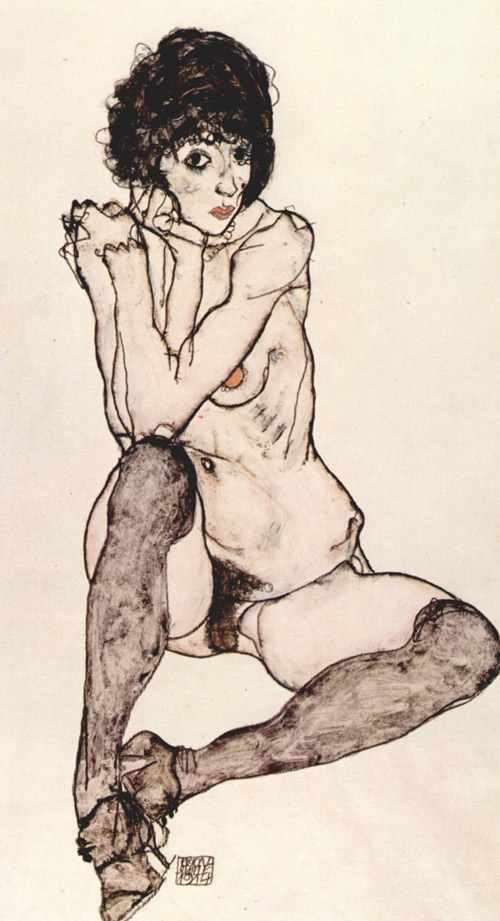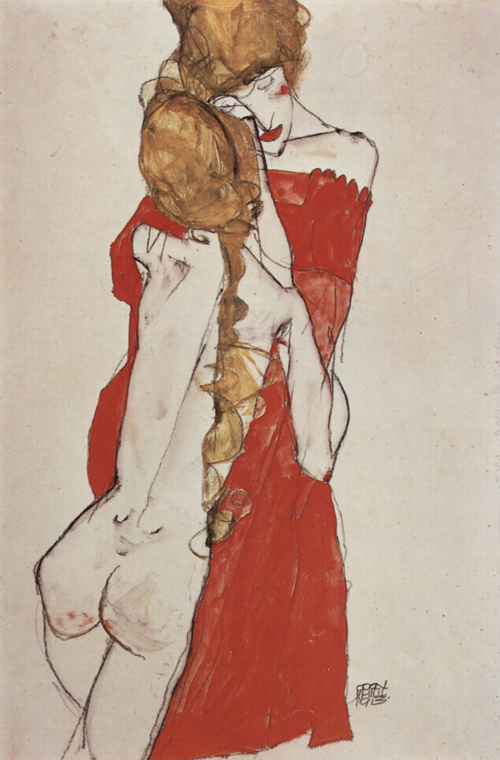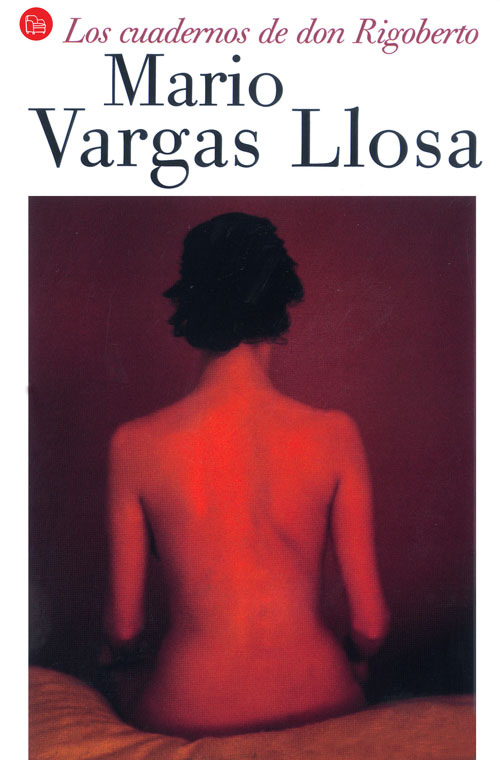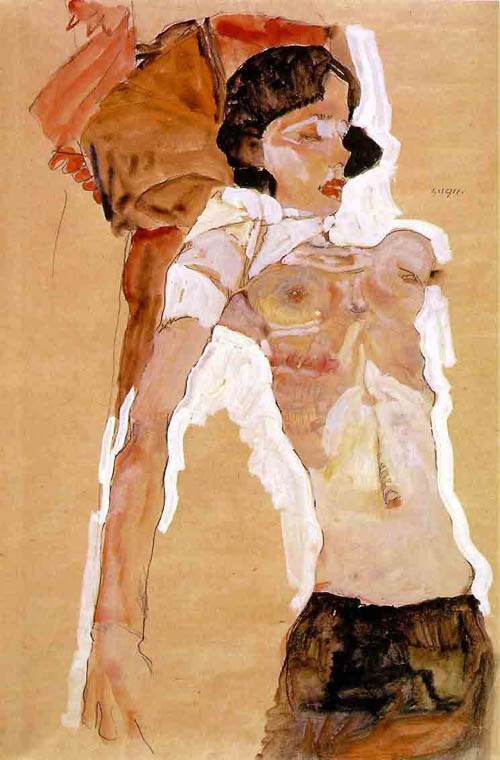It is his strange way of painting – his distorted, twisted lines which show the subject from unusual angles, in images loaded with eroticism which is what has always drawn me to the work of Egon Schiele.

The discovery of this Vienna-born painter is all thanks to writer Vargas Llosa, who uses the storng erotic element in Schiele´s work to intensify the relationship between Fonchito and his step-mother, in the book “Los cuadernos de Don Rigoberto” (“The Paintings of Don Rigoberto” – a great book, by the way). As soon as I finished the book, I immersed myself in the work of Schiele.
Though I thought initially that his obsession with the self-portrait was simply down to narcissism on the part of the artist, having read the criticism, I have learned a little more about the process of introspection that Schiele reveals in his paintings. None of the portraits are a faithful likeness – because the self he wanted to express was not the visible one, but the inner self and all of its complexities. To use to a metaphor, Schiele´s self-portraits are the like the mirror in Dorian Gray: they show his true self, and not the exterior appearance seen by everybody else. This is why Schiele deliberately distorts his self-portrait – to bring light to the tension between the true self, and the represented self, and discover which is most recogniseable to him.
It is this approach which gives the work its unique perspective, and which has gained Schiele the respect of Gustav Klimt, a key inspiration for the artist.
Though Schiele´s work is highly original, Klimt was a grand master to look up to. His admiration was such that he even attempted to recreate some of his paintings, such as 1904´s Nude Woman, Judith II of 1909, and Aquatic Serpents of 1904-1907.
It was around 1910 that Schiele started to move away from the influence of his maestro, and his devotion to the erotic took on more form and strength. His paintings show nude men and women, exploring themselves, couples making love, prostitutes revealing their breasts – all painted in that exploratory way, all in search of some kind of meaning. For Schiele, eroticism was so important, that he believed erotic art to be “sacred.” Eroticism was synonymous with viewing the world joyously, freely, and without constraint – not only in his work, but his personal life too, and he was known for his strong, stable relationships.
Egon Schiele is without a doubt one of the most important painters of the end the last century, and it´s definitely worth going and exploring his work.
For anybody who likes to add an element of culture to their tourist visits, a visit to Vienna´s Fine Art Museum, to experience the work of Schiele is a great place to start.
 Miruton
Miruton
Rent apartments in Vienna the birthplace of Egon, and the inspiration of his work. He is a great way to start an exploration of the city.
 Translated by: Poppy
Translated by: Poppy
Contact Me

 English
English


